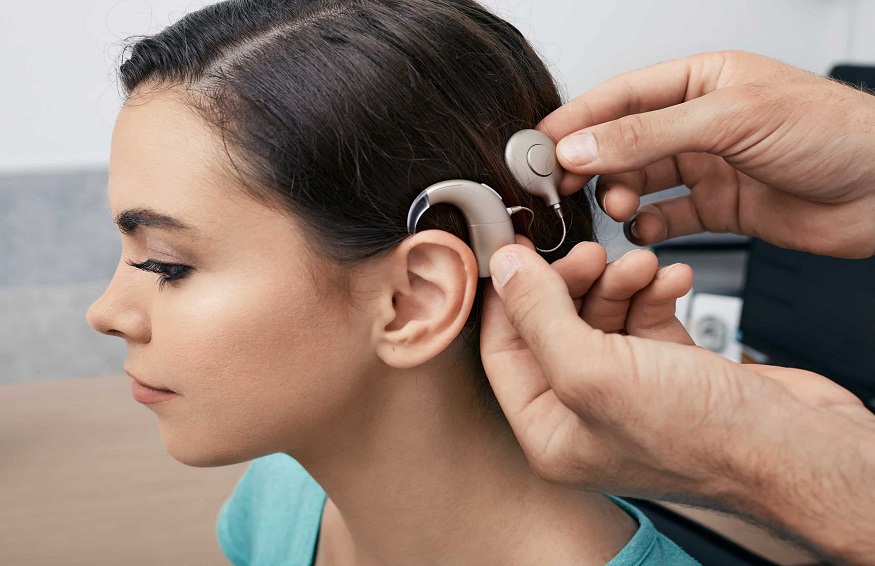Hearing loss, a common but often disregarded condition, has a big influence on one’s quality of life. Fortunately, advances in hearing aid technology have altered the field of auditory treatment. However, with so many options available, selecting the proper hearing aid can be a daunting undertaking. This comprehensive guide seeks to simplify the decision-making process by providing insights and factors to help people choose the best hearing aid for their specific needs.
1. Understanding the Different Types of Hearing Loss
The first step in selecting the appropriate hearing aid is to determine the kind and severity of your hearing loss. Hearing loss can be sensorineural, conductive, or mixed, and each requires a hearing aid with distinct capabilities. A full audiometric evaluation by a skilled specialist is essential for determining the nature and severity of the hearing impairment.
2. Types of Hearing Aids
Hearing aids come in a variety of forms, each responding to different preferences and levels of hearing loss. Behind-the-ear (BTE) hearing aids are adaptable and appropriate for all levels of hearing loss. In-the-ear (ITE) aids are custom-moulded to fit within the ear and provide a discreet option. Receiver-in-canal (RIC) and completely-in-canal (CIC) aids are smaller and less noticeable, making them a more desirable cosmetic option for persons who care about their appearance.
3. Technical Features
Modern hearing aids include various technological elements to improve the listening experience. Consider Bluetooth-enabled devices for seamless connection with smartphones, allowing users to stream phone calls, music, and other audio directly to hearing aids. Additional capabilities, such as noise reduction, directional microphones, and tinnitus masking, can enhance the device’s performance in various contexts.
4. Consider your Lifestyle
When choosing a hearing aid, consider your lifestyle and everyday activities. If you live an active lifestyle, seek gadgets with high durability and moisture resistance. Hearing aids with enhanced noise reduction characteristics can improve the listening experience in busy areas for people who frequently interact with others.
5. Budget Considerations
Hearing aid prices vary substantially depending on technology, features, and manufacturer. While it is critical to invest in a high-quality gadget that fulfils your requirements, it is also important to consider your budget. Some hearing aids may be covered by insurance, and there are financial assistance programmes available to make these necessary devices more affordable.
6. Seeking Professional Advice
Choosing the correct hearing aid is a personal process, and consulting a hearing care professional is crucial. Audiologists are qualified to assess hearing test findings, recommend appropriate devices, and give continuous support for adjustments and maintenance. Hearing aid testimonials from those who have gone through a similar procedure might provide helpful insights and viewpoints.
7. Tral Periods and Adjustments
Many hearing aid manufacturers provide trial periods to allow users to test the device in real-world scenarios. During this time, it is critical to communicate with the audiologist about any discomfort or necessary adjustments. Fine-tuning the settings to match individual tastes and addressing any concerns leads to a more satisfying long-term experience with the chosen hearing aid.
8. Connectivity and Accessibility
Consider the connectivity possibilities available with different hearing aids. Bluetooth connectivity enables smooth integration with cell phones, televisions, and other audio devices. Additionally, accessibility features like remote control apps and interoperability with assistive listening devices can improve the hearing aid’s overall usability.
9. Maintenance and Upkeep
A hearing aid’s best effectiveness and lifetime require regular maintenance. Cleaning the device, replacing batteries (or charging rechargeable ones), and swiftly addressing any concerns all help to improve its general functionality. Regular check-ups with the audiologist guarantee that the device continues to match the user’s changing hearing demands.
10. Realistic Expectations
Finally, you must have realistic expectations about a hearing aid’s capabilities. While these technologies can greatly improve auditory experiences, they may not completely restore hearing to normal. Understanding the limitations and benefits of hearing aids establishes realistic expectations for users, encouraging a more positive and adaptable attitude.
Conclusion
Choosing the appropriate hearing aid is an important step towards regaining control of one’s auditory experiences. Individuals can make informed judgements that are tailored to their own needs by taking into account aspects such as kind of hearing loss, lifestyle, budget, and technical features. Seeking professional advice, reviewing hearing aid testimonies, and taking advantage of trial periods all help to ensure a more effective choosing process. Individuals who wear the correct hearing aid can improve their speech, social connections, and general quality of life.















+ There are no comments
Add yours